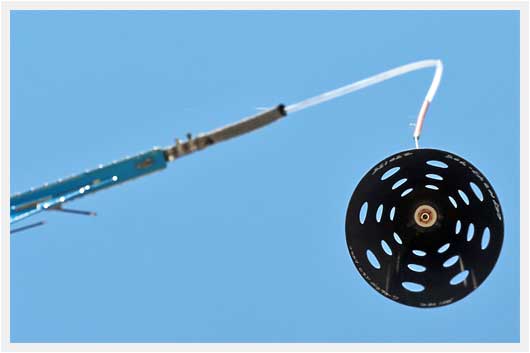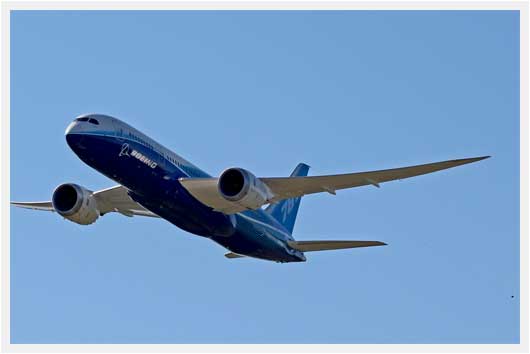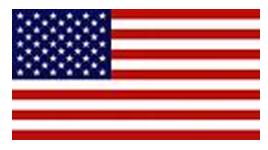It Takes Three Common Hose Clamps To Fly The Prototype 787!
 Monday, October 3, 2011 at 09:57PM
Monday, October 3, 2011 at 09:57PM  (click pic to enlarge) 3 common hose clamps used in the 787 trailing cone installation
(click pic to enlarge) 3 common hose clamps used in the 787 trailing cone installation
Now that ANA has taken possession of their first completed 787 Dreamliner, and it's less than a month before it hauls real life paying passengers, I figure it's a good time to look back at the good ole days of the prototype 787. And one of those really good ole days was Friday July 29th... that's the day that Boeing brought the very first 787, ZA001, and put it on public display at Oshkosh 2011 for a handful of hours. I took hundreds of pix of the airplane that day, and many of them were a little different than your typical images.
One thing I enjoyed getting pix of was the 'trailing cone', that little cone that dangles behind the rudder when the airplane is one the ground. That cone is attached to some plastic tubing that exits the trailing edge of the vertical fin tip. In the air it's extended to a point well behind the airplane (a wingspan distance or more) and it's used to fetch up a really good and untainted static source so that the instruments that need a static source are calibrated and providing data that's completely accurate. It's interesting that the existence of the static cone has been a real topic of interest in the last few years for those who didn't know what it was.
 (click pic to enlarge) The full trailing cone assembly on the Dreamliner prototype
(click pic to enlarge) The full trailing cone assembly on the Dreamliner prototype
For the certification process, the FAA requires that the instruments are calibrated, and the trailing cone is often the most cost effective way to accomplish this. The one element that really points to how down-to-earth this installation is the three common hose clamps used to hold that approximately one-foot long piece of semi-rigid rubber tubing in place. I assume it's there to provide some support when the cone isn't actually trailing behind the airplane in flight, keeping the hollow translucent white tubing from kinking. Seems like it functions much like a strain-relief on an electrical cord on a power tool. I was just struck by how un-aerospace it seems... but in reality, it looks like it's exactly what's needed, and no money was wasted in the effort. It can't hurt to count your pennies when your dropping $30 billion+ into a new airliner project!
If I understand the 'trailing cone' components correctly, the cone is there to keep everything trailing nice and stable behind the aircraft, and the actual static ports are positioned forward of the cone. I assume they are in that rigid looking piece that's at the end of the translucent tubing.
 (click pic to enlarge) The 787 fly-by before landing at OSH11 - trailing cone extended
(click pic to enlarge) The 787 fly-by before landing at OSH11 - trailing cone extended
The picture directly above shows the Dreamliner as it made a fly-by before landing at Oshkosh... you can see the trailing cone extended well behind the aircraft. Those three little hose clamps are hanging on and doing their job! Looking again at the first pic at the top above, it looks like that rubber hose was about due for changing. And I wonder if there's a reason one clamp points one way and the other two point the opposite way. I'd be inclined to put 'em all on the same way.
Anyway, I found it all pretty fascinating... I hope you do too : )
 Martt |
Martt |  4 Comments |
4 Comments | 













































































Reader Comments (4)
I was sitting in the Warbirds Café eating breakfast with my wife talking to some new friends when something caught my eye. It was so high and small when it first flew over I was surprised I saw it. But somehow I instantly knew what it was. I pointed up and said “there it is!” Everyone around us looked for a moment wondering what I was pointing at. I said “it’s the Dreamliner”. Everyone quickly grabbed their cameras and ran for the flightline (me included). I got some really good pictures of the first flyby and landing from the far north end of the field. My wife kept asking me what that cone thing hanging off the tail was. I was embarrassed to say that I had no idea. Thanks to your post, I know a little more now. The other thing I didn’t realize was that it was retractable. I zoomed in on my pictures and confirmed that, yes indeed it did retract just before landing. Very interesting.
Darell K- I'm glad you found the info helpful : )
The hose clamps are put on that way to maximize holding power. The saddle part tends to hold the tightening band off the right where is passes through the screw part of the clamp. Putting one on opposed makes for a better grip, tighter and in the liquid uses it make for a more water tight clamp. L
Larry Lyons- Thanx for the input... seems to be some good sense in your clamp statement : )